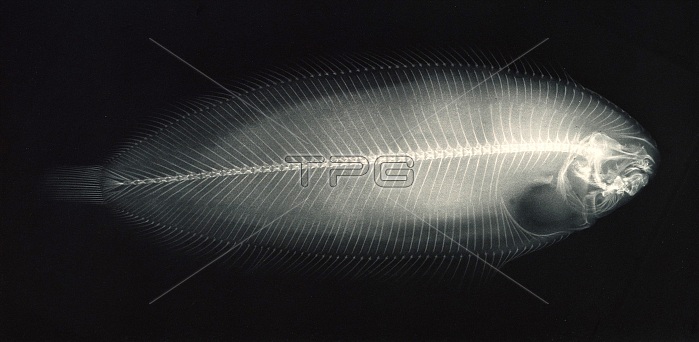
Historical X-ray of righteye flounder (Pleuronectes solea), 1896. Taken by Josef Maria Eder (Austrian, 1855-1944) and Eduard Valenta (Austrian, 1857-1937). Photogravure. Eder was the director of an institute for graphic processes and the author of an early history of photography. With the photochemist Valenta, he produced a portfolio in January 1896, less than a month after Wilhelm Conrad Rontgen published his discovery of X-rays. Eder and Valenta's volume, from which this plate derives, demonstrated the X-ray's magical ability to reveal the hidden structure of living things. Human hands and feet, fish, frogs, a snake, a chameleon, a lizard, a rat, and a newborn rabbit are all presented in exquisitely printed photo-gravures, as are carved cameos and an assortment of natural materials. In an era when photography's ability to accurately depict the visible world had become commonplace, this newfound capacity to record the invisible opened up a host of possibilities, both scientific and aesthetic.
| px | px | dpi | = | cm | x | cm | = | MB |
Details
Creative#:
TOP22175501
Source:
達志影像
Authorization Type:
RM
Release Information:
須由TPG 完整授權
Model Release:
N/A
Property Release:
No
Right to Privacy:
No
Same folder images:

 Loading
Loading